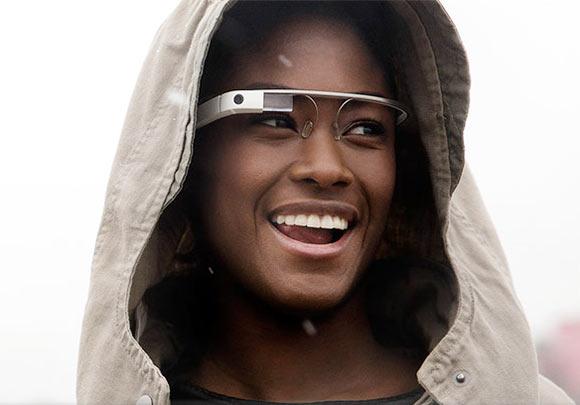Photographs: Alessia Pierdomenico/Reuters Roopa Unnikrishnan
These trends not only provide opportunities for entrepreneurial ventures but can also change India, says Roopa Unnikrishnan
Reflecting on global trends that could continue the already impressive transformation of India's culture and business, I had to start by acknowledging all that has already shifted in the country.
For example, go on to freelancer sourcing sites Freelancer.com, PeoplePerHour or elance.com and you'll be inundated by qualified, competitively-priced Indian bids for anything from web and logo development to analytics.
These globally aware young Indians will continue to shift India's future prospects. They should consider the following global trends -- all providing opportunities for entrepreneurial ventures and change in India as well.
1. The sharing economy and the world of experiences
The web and attendant technologies have made it possible to take physical products and turn them into services.
For example, in the US, online sites like RelayRides and GetAround, which are peer-to-peer car rental sites, allow people to hire their neighbours' cars for any duration.
Unused cars are now a service members get paid for. What's interesting about this is that RelayRides doesn't own any inventory, has a self-renewing supply, can easily expand geographically by adding a few servers, and allows the community of users to be the quality control through the reputation management part of the website.
While sharing has been part of commerce for ages -- remember the lending library? -- technology and the Internet have made the sharing of services and physical assets a breeze.
Similarly, AirBnB has made it possible to find a room in most major cities for rent at fractional prices, Snapgoods lets you rent all kinds of things -- the list goes on.
The heart of this story, though, is the fact that people are more interested in the use of a product, not the product itself -- so selling the use of a product as a service is an emerging priority.
And we've now gone from renting from a company to renting from other consumers.
Roopa Unnikrishnan -- a Rhodes Scholar, winner of a Commonwealth Games gold medal and the Arjuna Award, the Indian government's premier sporting honour -- is a management strategist with her own practice, Center10Consulting. Read her blog at center10thinking.blogspot.com
Please click NEXT to continue reading
2. The transformative power of mobile, access and big data
Photographs: deepmind.com
The emerging markets have been first adapters in the move to mobile, with key services like news and banking being front-runners in providing mobile services. However, as cheaper smartphones emerge, a whole world of opportunities will emerge from the confluence of access, apps and data.
In the four years since 2010, the US population flipped how much time it spent accessing the internet on computers vs mobile phones -- going from 24 minutes to two hours 24 minutes on mobile, while computer access stayed constant at two hours 20 minutes.
Companies that learn to watch their users' behaviours and preferences on apps across their hand-helds, will be wiser about business decisions and hopefully will drive innovation.
That's how companies like Uber, an app that provides access to an independent list of chauffer-driven cars, can fluctuate their pricing -- as demand for their services shows signs of increasing, they introduce surge pricing to allocate cars to the highest paying customer.
Please click NEXT to continue reading
3. Retail is more about story-telling than about selling
Photographs: Lucas Jackson/Reuters Roopa Unnikrishnan
As more and more consumers take their time over purchases -- slipping from computer to cell to hand-held to walking into the retail store... and out again, the job of a business is not just making a product or service available.
It's about being able to provide a consistent experience and storyline across the platform. This is not a simple task, but is possible if companies don't truncate their marketing into channels, but focus on the customer story and customer needs. That clarity and designing around the customer can drive growth and innovation.
Using technology to keep track of a customer across platforms can also help companies better educate and maintain their relationships -- apparel superstar Uniqlo is known for trendy, affordable clothes and outerwear made of highly innovative fabrics.
Walk into their NY flagship store, and you will find embedded screens everywhere showing you how to wear the clothes, trendy combinations, instructional videos on how to roll up the big jacket into the tiny bag attached (a specialty of Uniqlo).
The store is arranged like a website -- you are a step away from the next colour, or a similar style, and all store personnel have handhelds so they can order something for you if it's not on the shop floor.
It's like walking into a website... and the website is like being an extension of their store, which makes for a happy customer.
Please click NEXT to continue reading
4. Wearable technology and telemedicine transform health
Photographs: google.com/glass/start Roopa Unnikrishnan
While advanced telehealth discussions tend to focus on the sci-fi vision of surgery done across the ocean, the true beneficial impact has come from work like that in Johns Hopkins where expert paediatricians help children in Eastern Shore town, Berlin -- children who would be denied care because of the 8 hour round trip, now have cutting edge therapy.
The trick was not in the fancy technology, but in ensuring internet connectivity, and in training nurses at the remote location.
Transformations in health are also being driven in a quite but persistent way by wearable technologies like the Fitbit, Jawbone and Nike Fuel band -- the access to useful bite-sized health information provide consumers the context and motivation for more healthy decisions, which has transformed many industries in the US -- from apparel to fast foods.
Please click NEXT to continue reading
5. Education that builds hearts, minds and skills
Photographs: Fabrizio Bensch/Reuters Roopa Unnikrishnan
The best advertisement for MOOCs (Massive Open Online Courses) is probably MIT's 17-year old Mongolian student Battushig Myanganbayar who enrolled as a 15-year-old in MIT's first MOOC on electronics, from his nomadic white felt tent.
As part of the course, he invented a device to warn his 10-year-old sister of oncoming cars and he'd earned the attention of MIT faculty.
While not all online education stories are this transformative, there have been multiple new platforms developed in India as well that are making access to targeted as well as broader capability-building easy and financially accessible.
For companies, those who leverage these technologies to continuously develop their talent will find themselves ready for market changes and innovation.






Comment
article